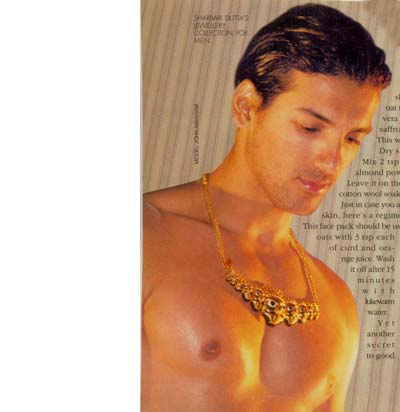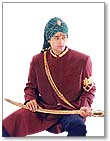




 |
||
Sharbari's Gold Jewelry Collection for
Men Yet, look back at human civilization and you see popes and emperors, American Indian warriors and African chiefs, Central Asian tribesmen and European lords displaying jewelry on fingers, belts, ears, necks, heads and shoes, not to speak of body paint and fine etching on metal armor. Likewise in India, from Mohenjodaro to the Mughals, from mythology to religious and social ceremonies extravagant male fashions had jewelry as an integral part. Actually, even now, most men wear some kind of accessory, which is usually gold. Like finger rings and tiepins and cufflinks. As a designer of menswear Sharbari wished to reinstate the Indian heritage in clothes, not merely as museum exhibits, but as eminently wearable wardrobe masterpieces for the millennium men. Thus were the Sherwani or Angrakha reinvented and the Dhoti appeared in a new avatar. In jewelry it was the same thing: bringing back the tradition of male jewelry. Whether everybody wears her creation or not she will be happy with influencing the tastes and setting trends. That is what Sharbari's menswear did. And that is what, in this post-modern age of changing attitudes and values, her jewelry will do. As a designer Sharbari felt that little experimentation had been attempted in crafting standardized uninspired pieces of accepted male jewelry. She invented unusual new pieces and also gave a new identity to such ritual necessities as the holy thread and in general, experimented with the designs of the jewellery.
|
||
|
||

 Gold
Gold Diamond
Diamond